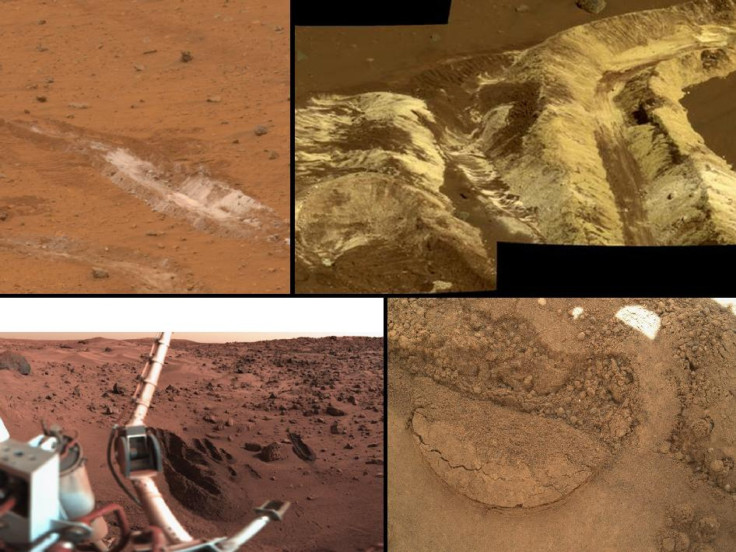Mars Rover Curiosity's 'Huge Discovery' A Dud

When NASA breathlessly announced that its Mars Rover Curiosity had made a huge discovery, it set off wild speculation. But what NASA revealed Monday from an analysis of soil samples is a letdown.
Curiosity did not discover life, amino acids or water on Mars. The “huge discovery” hype was started by John Grotzinger, the principal investigator for Curiosity, when he talked about recent soil samples collected by the rover. On NPR, Grotzinger said, “This data is gonna be one for the history books. It's looking really good.”
After fully analyzing the soil samples collected by Curiosity from the “Rocknest” drift in Gale Crater, NASA has now announced the pedestrian results. Many will be disappointed as NASA did not find life on Mars or even a hint that life had ever existed on Mars. According to NASA, the Curiosity samples contained “a complex chemistry within the Martian soil. Water and sulfur and chlorine-containing substances, among other ingredients.”
This is certainly good news for the Curiosity mission. NASA notes that Curiosity's on-board laboratory can process and analyze all the samples that will be collected over the next two years, meaning the Mars mission could turn up more exciting discoveries in the near future.
But this discovery doesn't seem likely to make the history books.
Sample Analysis at Mars (SAM) Principal Investigator Paul Mahaffy, from NASA's Goddard Space Flight Center in Greenbelt, Md., said, “We have no definitive detection of Martian organics at this point, but we will keep looking in the diverse environments of Gale Crater.” Curiosity's lab contains SAM and the Chemistry and Mineralogy (CheMin) equipment. SAM can be used to detect if Martian soil samples contain organic molecules.
The water found in the Curiosity samples does not mean Rocknest was wet or had running water. NASA notes, “Water molecules bound to grains of sand or dust are not unusual, but the quantity seen was higher than anticipated.”
The only organic molecules found in the Curiosity samples were chlorinated methane compounds, but NASA is tempering any expectations. The chlorine that makes up the compound is from Mars while the carbon may be residual debris from Earth. Mostly, the soil samples show that Curiosity can accurately collect and analyze a wide set of data. Curiosity will continue to cross Gale Crater en route to its primary destination, on the slope of Mount Sharp. Curiosity will continue to collect samples and NASA will continue to analyze the Mars findings.
Despite the disappointment, there has been one huge discovery by NASA in the last week. The Messenger spacecraft provided photos of Mercury that showed the possible existence of water inside ice near the planet's north pole. While Mercury is extremely close to the sun it does not have a rotational axis, according to NASA, which means there are regions in the north and south poles that do not get sunlight and would allow for ice to develop.
© Copyright IBTimes 2024. All rights reserved.






















